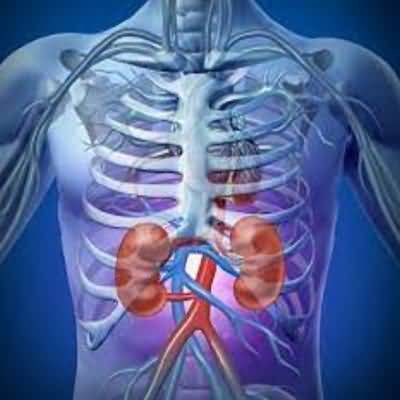The kidney is very important organ
It supplied about 20 % of cardiac output
Cardiac output is about 72 ml per peat, 72 peat per min average 5200 ml per minute
Renal blood flow is about 1-1.2 L/min enter the kidney, most of it 90 % goes to the cortex
Renal plasma flow equal Renal blood flow (1 – Ht), it is about 500 – 600 mL/mi
Glomerular filtration rate equal About 20 % of Renal blood flow (filtration fraction) 100 – 120 mL/min
The kidneys maintains semi constant glomerular filtration rate by some mechanisms here illustration
Glomerular filtration rate depend on:
Pressure gradient across the filtration barrier:
glomerular hydrostatic pressure (= 60 mmHg). It promotes filtration.
hydrostatic pressure in Bowman’s capsule (= 18 mmHg). It opposes filtration.
colloid osmotic pressure of glomerular plasma proteins (= 32 mmHg). It opposes filtration.
Net Filtration Pressure (NFP) = 60-18-32= 10 mmHg.Permeability of the filtration barrier (through 3 layers):
The endothelium of capillary
Filtration slits of epithelial lining of bowman capsule (Podocytes)
Basement membrane (high negatively charge due to presence of proteoglycans)Filtration membrane surface area
* Effect of glomerular hydrostatic pressure
Increased by: (increase GFR)
increase Arterial blood pressure (slightly affect due to autoregulation)
Afferent arteriole vasodilation
Moderate efferent arteriole vasoconstriction(1).Decreased By: (decrease GFR)
Afferent arteriole vasoconstriction
Efferent arteriole vasodilation
* Effect of hydrostatic pressure in Bowman’s capsule
Increased by: (decrease GFR)Urinary obstruction (such as: Kidney stones)Kidney edema
* Effect of colloid osmotic pressure of glomerular plasma proteins
Increased by: (decrease GFR)
Dehydration
Decrease renal blood flow
Severe efferent vasoconstrictionDecreased by: (increase GFR)
Hypoproteinemia
increase renal blood flow
Autoregulation of GFR and Renal Blood Flow
Effective in blood pressure range from 75 to 160 mmHgdrop blood pressure below 75 or higher than 160 will change GFR about 10 percent mechanismhigh blood pressure lead to afferent arteriole constriction and dilatation the efferent arteriolelow blood pressure, dilatation afferent arteriole and constriction efferent arteriole
